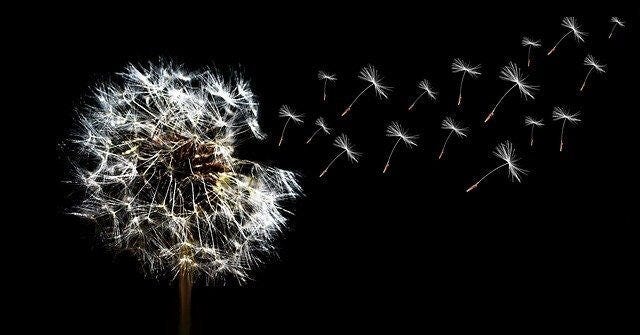"All great changes are preceded by chaos."
- Deepak Chopra
This week’s Mindful Monday post should be the Tao of Storytelling one but I haven’t had time to write it. So instead today’s post is adapted from a course I wrote and ran several years ago as, just like the post talks about, my life is going through a great change which is being preceded by chaos after becoming homeless almost six weeks ago. It’s been both a hugely challenging and inspiring time, as my husband and I have had to really look deep inside our hearts to figure out what we want and how best to move on from this situation we’ve found ourselves in.
I loved writing this course and playing with the ideas from science and spirituality about the nature of reality and how we can use them in storytelling. I hope you enjoy this extract from it. When I find some stillness again, I plan to write a new one with new concepts to play with. As if you read my posts regularly you’ll know that the nature of reality is a fascination of mine.
In the meantime, my brand new Mindful Memoir Course is open for bookings and starts on 16th June. I am thrilled that several spots have been filled already and can’t wait to start working with people on it.

Fractals are created by repeating a simple process over and over in an ongoing feedback loop. These fractal repetitions play out in our lives over and over again and there's a theory that there's a point between each repetition that is the optimum moment for change. We'll look at these moments in time and how they can be used for characters to make the changes they need to, or not.
Looking at the quote from Deepak Chopra, in storytelling terms the changes that our characters go through are always preceded by some form of chaos, usually in the physical world of plot, which precipitates upheaval in their mental/emotional/spiritual world and brings about the change that stories hinge on. This is done in a quick, subtle way in flash and over a longer period, and more in depth, in novels. It’s also the key element of memoir too, which tells of something that happened in someone’s life and the transformation it led to.
In this video, Gregg Braden looks at these fractal patterns in our lives, what can cause them to occur, and describes the moments where change can happen.
I think the idea that changes made in these choice points are more potent, and have bigger impacts in our lives is a great narrative tool to play with. On his website, Gregg Braden has created a Fractal Time Calculator so that you can figure out when patterns might repeat based on a seed event occurrence, and when that "Choice Point" will come around. I have had great fun playing with this for my characters in my longer narratives to figure out when things happened in their past for what I'm writing in their present.
Choice Points in Storytelling
In terms of character psychology, the choice point sees event also ties into the concept that 'what came before creates the now' which is, when you think about it, what we are always writing about.
Even in flash, when we meet characters very briefly in a pivotal moment, once we start digging deeper in the editing of the drafts we create we always think about what led them to this point. And the idea that the choices that come at this point are more potent, have more lasting impact, is the stuff of storytellers' dreams. These impacts, both positive and negative, can reverberate out, from our character into the wider world of friends, family, lovers and colleagues.
Do we always have to be clear on what the choice they've made is? I don't believe that's always necessary and we can just have a story that is at that point and leave it open to interpretation.
Like in this story in Cheap Pop: Exit by Rebecca Hannigan
We know that the narrator in this story has been cycling through repetitive (fractal) feelings and thoughts that have led to this breakdown at dinner on a cruise ship. That the idea of jumping, of exiting this life, is one that has been recurring again and again, and here we are with them at this critical choice point as it comes back once more.
We don't know what happens next — we can make our own minds up about that — but we can see that whichever choice is made it is going to have a bigger, more lasting and wide-reaching impact than when the character has chosen not to jump in the past.
We see the moment of chaos for this character, both in their minds and in the situations they find themselves in, that precede the change that is coming. We can also see that there was a seed occurrence in the past that led them to this point, even if we have no idea what that seed was.
Fractals in Storytelling
I find it fascinating that in the craft book, Meander, Spiral, Explode: Design and Pattern in Narrative, Jane Alison reveals that fractal patterns not only define the lives our characters live but that they occur in the way we write about them too.
Another new fractal discovery: many major writers — Woolf, Joyce, James, Bolano — create fractals with their sentences. A word-count analysis of their texts shows self-replicating ratios between sentence lengths. The researcher Stanislaw Drozdz explains that fractals: "Point to the hierarchical organization of phenomena and structures found in nature. So we can expect natural language, which represents a major evolutionary leap of the natural world, to show such correlations as well."
It appears that without our conscious mind even knowing we are doing it, we're writing in fractals as well as about them occurring!
In the same chapter, Alison continues:
The most fractal works — meaning fractals of fractals — were stream-of-consciousness narratives, although it's not clear whether that style reveals depth of consciousness or the writer's imagination. But fractals forming the shape of a whole narrative are what interests me: texts that start with a "seed" or blueprint that spawns several more. In fractal narratives an initial segment is more likely to be compacted like a seed and generate the rest.
So here we have the seed event again — the original occurrence that sets the fractal repetitive cycles in progress leading up to the choice point, where characters can choose to change, or to stay the same. Does that work too for the fractal nature of our sentences, I wonder? That the length, structure and syntax of the first line of our stories plants the seed for the rest of them? What do you think? Do let me know in the comments. I love to discuss ideas like this!
Writing Prompt
OK, time to get writing!
Write a scene in a longer narrative, or a flash fiction story/memoir piece, that starts or ends at a choice point for the character. What is the chaos that came before it?
Here's some ideas for internal and external chaos that you can use to kick start this piece, or feel free to choose your own!
External Chaos
Being evicted.
A wedding.
Being involved in an accident.
A funeral.
Internal Chaos
Recognition of destructive behaviour patterns.
A spiritual revelation.
Falling out of love.
Falling in love.
Do let me know in the comments what you think about these ideas and how they can be used in stories. I love hearing from you!
With love,









